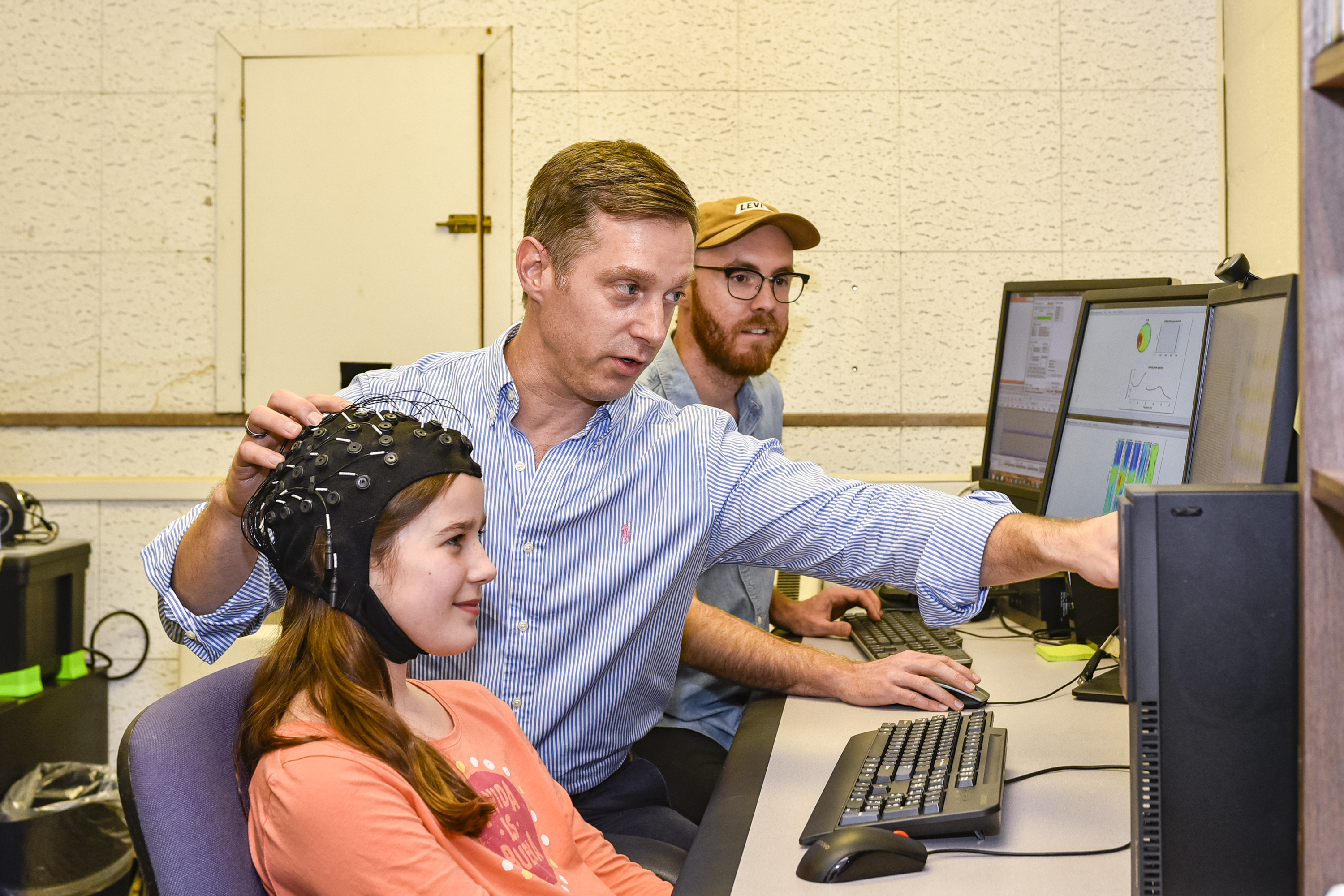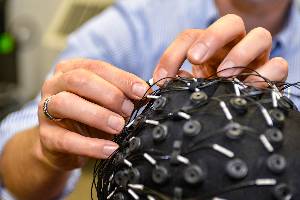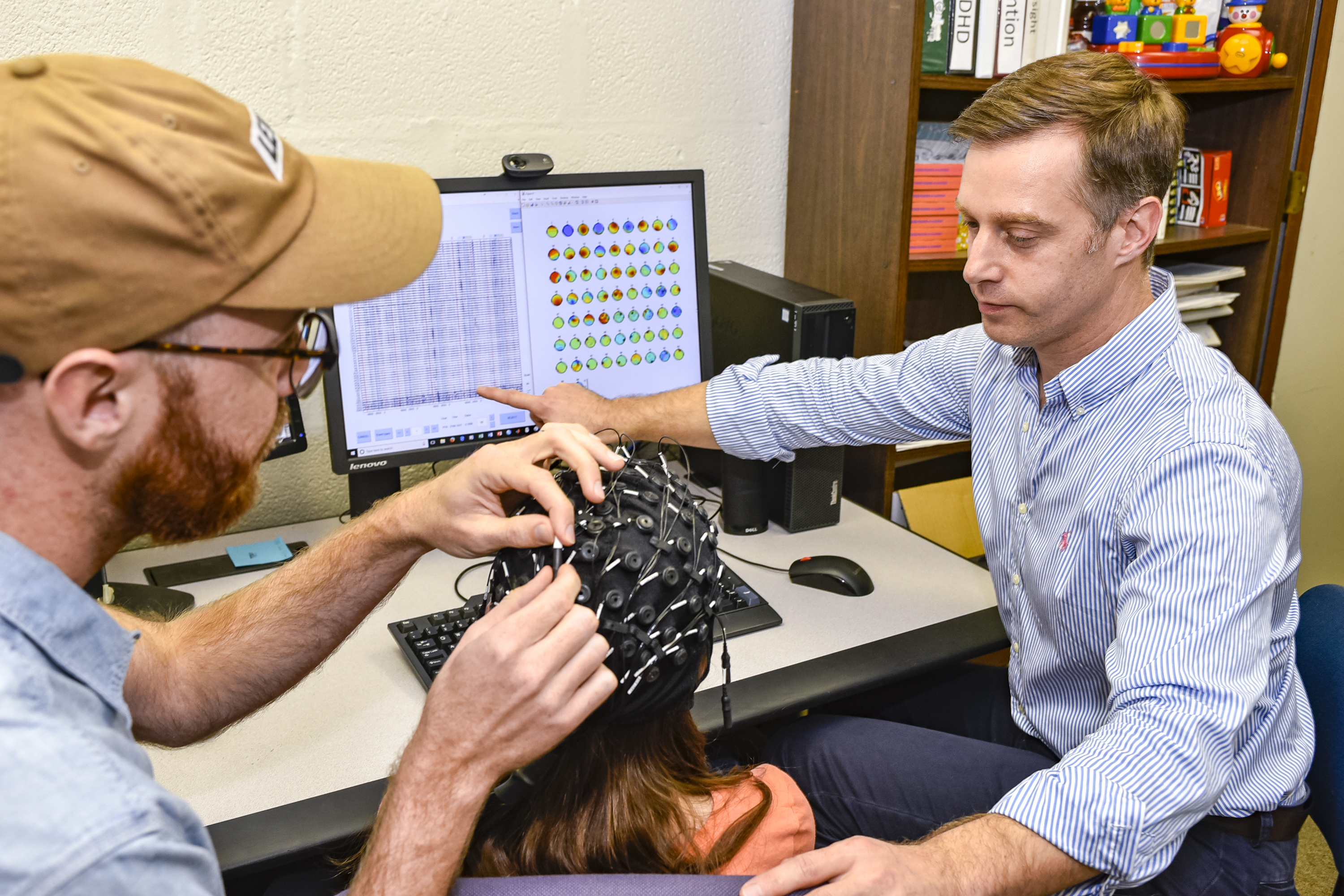Cognitive Linguistics Lab
Directed by Devin Casenhiser, Ph.D.
 |
 |
 |
Our lab studies what sorts of factors help or hinder language learning in both typically
developing and developmentally delayed populations. Specific areas of research include
understanding the role that sensory processing and sensory integration play in language
learning and development, measuring and improving methods designed to help children
diagnosed with autism learn to communicate more effectively, and research on cognitive
aspects of language learning and processing in young children and adults.
Our lab frequently conducts experiments in collaboration with our department’s clinics, especially those offering speech-language services to children. We are also dedicated to collaborating with clinics in the region and a wide range of faculty at both the University of Tennessee as well as other universities. Some of the lab’s research is supported by the UT Alliance of Women Philanthropists.
Our lab frequently conducts experiments in collaboration with our department’s clinics, especially those offering speech-language services to children. We are also dedicated to collaborating with clinics in the region and a wide range of faculty at both the University of Tennessee as well as other universities. Some of the lab’s research is supported by the UT Alliance of Women Philanthropists.
- Neurophysiological evidence for construction meaning
- Effects of sensory environment of engagement during speech therapy sessions for children at risk for autism
- The use of imitation to improve engagement during improvised music therapy for children on the autism spectrum
- Temporal neuro-dynamics of native and nonnative phoneme processing
- Multimodal Processing: We are examining expressive and receptive cross modal coordination in children with ASD, typical development, and other developmental delays. Understanding the coordination of various modalities in ASD, and how these characteristics relate to core and developmental features of ASD, will provide insight into underlying mechanisms of ASD. This research has implications for early detection and prognosis.
- Comparing Attention, Language, and Sensory Processing in ASD and ADHD: This is a qualitative study examining differences in the manifestations of aberrant attention in children with ASD compared to children with ADHD. Children with ASD demonstrate unusual characteristics of attention that can be misdiagnosed as ADHD. This can delay appropriate treatment and sometimes medications are prescribed that have a negative impact on the child.
- Happy Mom, Healthy Baby: This will be an intervention study with teen-age mothers who are at risk for high parental stress and their infants who are at high-risk for social, language and literacy difficulties.
- Vocal characteristics & developmental skills in ASD: This project assesses associations between vocal characteristics and other communicative and developmental skills in children diagnosed with autism.
- Joint Attention: The purpose of this study is to test an intervention designed to promote joint attention skillis in children at risk for developing autism.
Some of our collaborative partners include:
Cherokee Health Systems of East Tennessee
Autism Society of East Tennessee
Cherokee Health Systems of East Tennessee
Autism Society of East Tennessee
- Language Function in Autism
This study underscores the importance of functional language measures in guiding and evaluating treatment for children with autism, and suggests that play-based interventions can improving children’s use of language during parent–child interactions
- Sensory Processing
A myriad of treatment options are available for children with autism, yet little is understood regarding characteristics of parents (e.g., education) and children (e.g., severity of autism symptoms) that influence types and amounts of therapy utilization. Interviews from 70 families were analyzed to determine potential influences on utilization (e.g., start of first services, use of traditional services).
- Helping Children Learn Words
Research question: What is the most effective and efficient way to teach children with autism new words?
Participants: Children at risk for autism or children who have an ASD diagnosis
Age: 2-6 years
Compensation: $10 per half hour (between $80 and $240 total)
Duration: Twice per week for 30 minutes. Between 4 and 10 weeks duration.
For more information, contact dcasenhi@uthsc.edu
- Understanding Word Learning
Research question: How do children learn new words?
Participants: Typically developing children, Children who are at risk for or diagnosed with autism
Age: 6 to 36 months for typical children, 12 months-7 years for children at risk for/with ASD
Compensation: $25 total
Duration: The study will be divided between two 1.5 hour sessions (3 hours total duration).
For more information, contact dcasenhi@uthsc.edu
- Multisensory Coordination
Research question: How do children process multisensory information?
Participants: Children who are typically developing; Children diagnosed with autism; Children diagnosed with other developmental disabilities
Age: 1-5 years
Compensation: $25 gift card
Duration: 2 hours total duration.
For more information, contact dcasenhi@uthsc.edu
- ADHD and ASD
Research question: Are attention problems associated with ADHD and autism the same?
Participants: Children diagnosed with either ADHD or ASD
Age: 7-12 years
Compensation: $25 Target gift card
Duration: approximately 1.5 hours total duration.
For more information, contact dcasenhi@uthsc.edu
- EEG and ASD
Research question: How does our brain recognize and process human movements?
Participants: Typical individuals and individuals diagnosed with autism spectrum disorders
Age: 8-80 years
Duration: approximately 1.5 hours total duration.
For more information, contact dcasenhi@uthsc.edu
